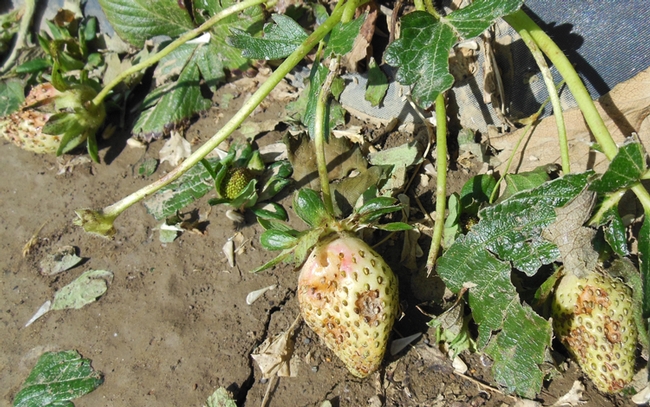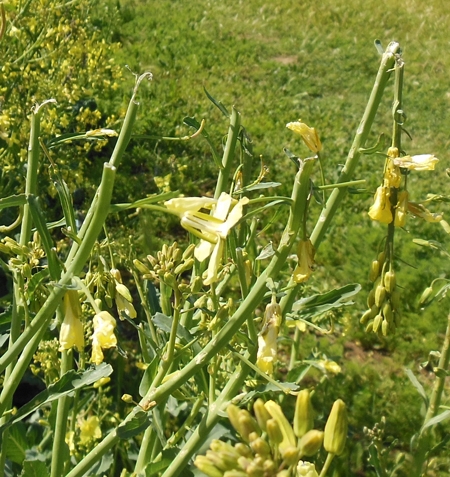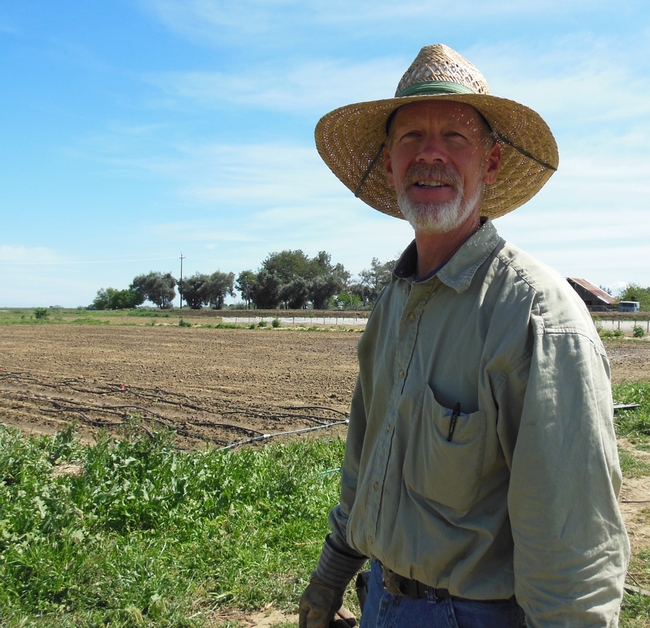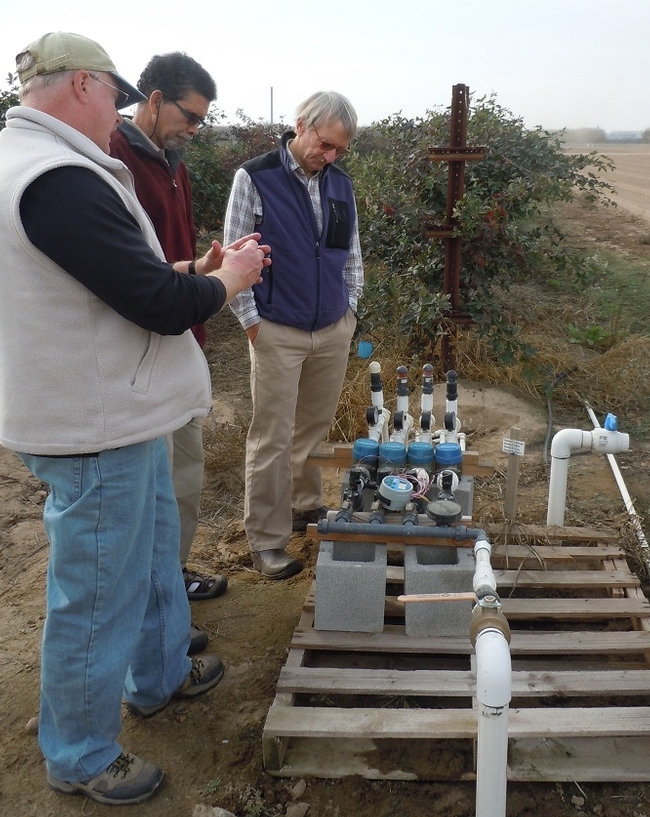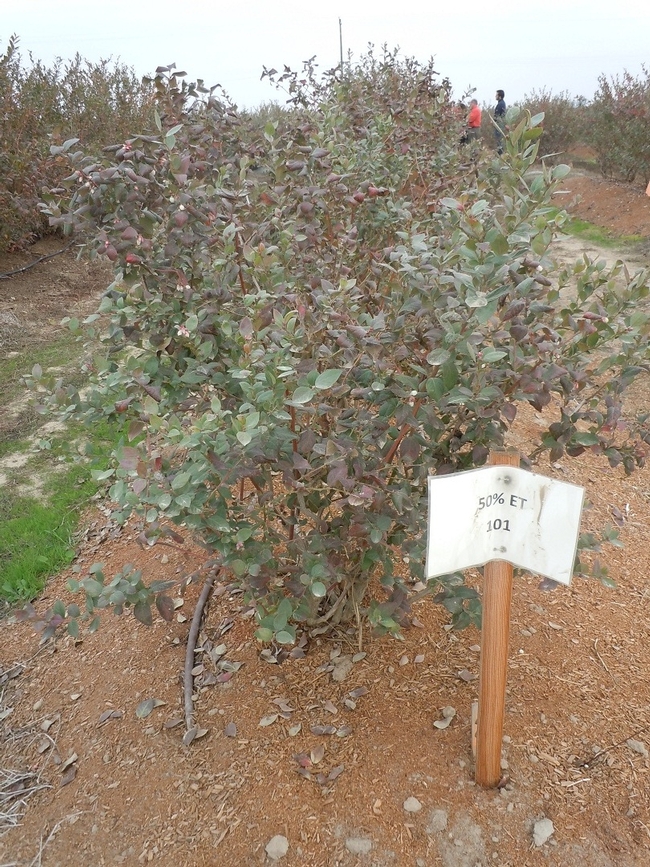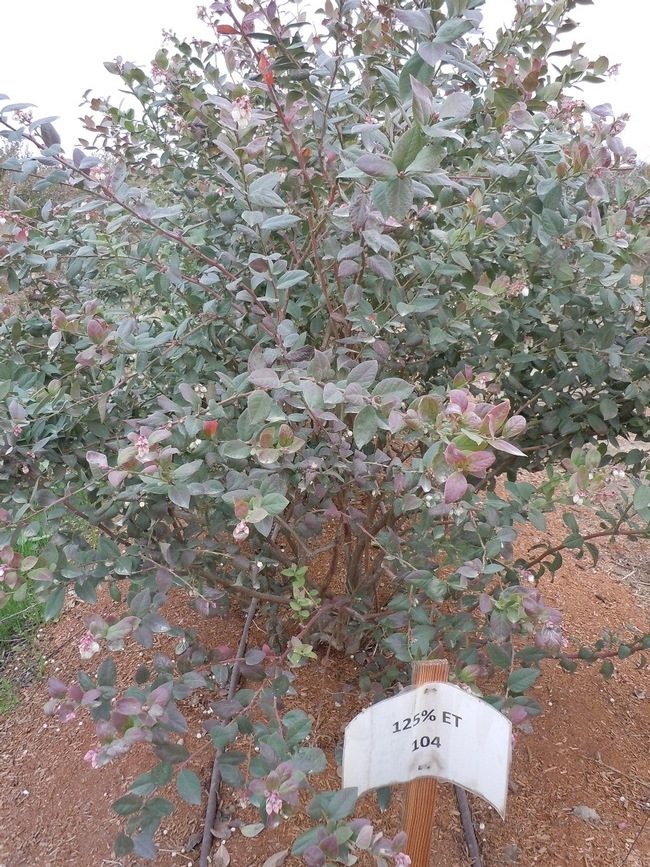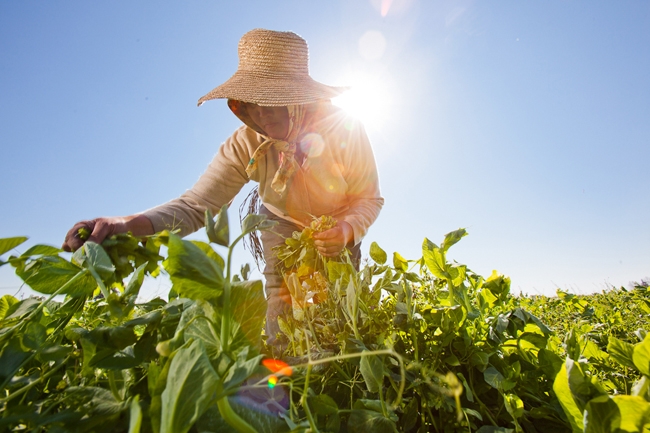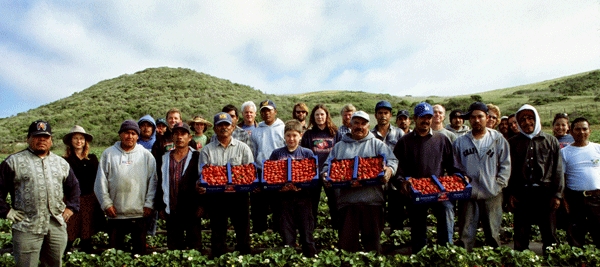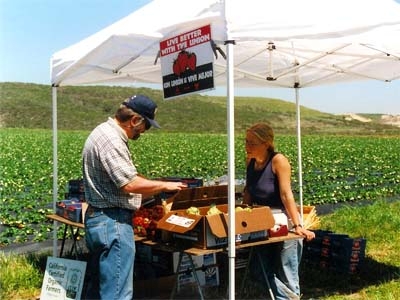Posts Tagged: strawberries
Twenty minutes of hail
Twenty minutes of hail on Easter Sunday means no melons for July 4th at Pacific Star Garden's farmers' market stall.
Hail comes sometimes, suddenly and randomly, in February or March or April. It can hit one farm but not the one down the road. This time the sudden hail hit Woodland farmers Robert and Debbie Ramming, owners of 40-acre Pacific Star Gardens, on March 31, almost as if Mother Nature couldn't wait for April Fool's day.
Mid-April, in most years, is a good time to visit strawberry farms in the Sacramento Valley for the earliest fresh juicy berries, but 20 minutes of hail put off the start of U-pick strawberry season at Pacific Star Gardens until May. The plants will survive, but damage to the berries and other crops will mean a loss of $5,000 to $10,000 for the Rammings - a big hit for a small-scale farm.
The hail was huge, pea size to marble size, and it came in at a 45 degree angle, hurting Robert's head through his cap. It destroyed the field of strawberries just starting to turn pink and the newly planted cantaloupes and other melons that would have ripened in early July.
Hail also knocked down plants and broke off heads full of flowers in the field of collards planted for seed harvest. Growing seeds for an organic seed company is new this year for the Rammings, so they started with a relatively small patch and will probably only lose a few thousand dollars worth of seed. Twenty minutes was all it took.
Pacific Star Gardens will recover. The next bloom of strawberries will be ripe and ready for U-pick in early May, with apricots and blackberries soon after. The farm is between Davis and Woodland, just off Highway 113. Check the Facebook page for what's ripe and when the farm is open for picking or purchase at the farm stand.
This is a farm story. This is a story of your food. It might make you think a little differently about strawberries, or about hail, or about the farmers at your farmers' market. Most farmers have stories to tell, and most would like the rest of us to understand a little bit about what it takes to grow crops and raise animals. We are lucky to have many opportunities to learn about and experience California farms and ranches.
Many of California's farmers and ranchers welcome the public with farm stands, U-picks, pumpkin patches, tours, festivals, cooking and canning classes, shearing and spinning demonstrations, tasting rooms, farm stays, guest ranches, fishing, hunting clubs, barn dances, outdoor dinners, open houses and a lot more. The University of California hosts an online agritourism directory and calendar, www.calagtour.org, where you can find a farm or ranch to visit. (Listing agritourism operations and events is free for California farmers and ranchers.)
UC is also partnering with the California Department of Food and Agriculture (CDFA) to help Californians explore California farms through a new page on the CDFA website, Discover California Farms. This one-stop portal to agricultural adventure helps visitors find a farm or ranch to visit, locate their closest farmers' market, find a community supported agriculture (CSA) farm that delivers weekly boxes of produce, learn about farm trails, fairs and festivals, or watch videos telling farmers' stories. California farmers and ranchers invite you to visit,taste, learn and enjoy!
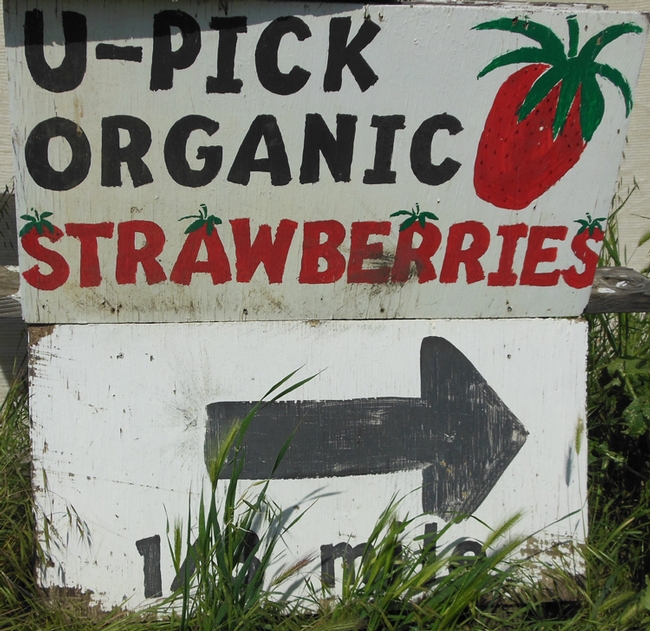
U-Pick strawberry sign
Can less water grow better berries?
It might be pouring rain today, but soon enough California will be dry again. As demand for water for a growing urban population and for environmental restoration increases, farmers throughout the state are working to grow crops using as little water as possible, and UC is working with them.
"Water supplies are being constrained. Farmers are facing reduced access to water," said Shermain Hardesty, a UC Cooperative Extension specialist in the Department of Agricultural and Resource Economics at UC Davis.
The research involves using some elaborate formulas for determining how much water is needed. UCCE advisor Richard Molinar, working with small farms in Fresno County, is irrigating small plots of strawberries with different amounts of water, some at 125 percent of the normal rate, some at 100 percent, and others at 75 percent and 50 percent of normal. In San Diego County, UCCE advisor Ramiro Lobo is doing similar research on strawberries and blueberries; UCCE advisor Manuel Jimenez is working with blackberries and blueberries in Tulare County; UCCE advisor Aziz Baameur is planting strawberries and blackberries in Santa Clara County, and UCCE advisor Mark Gaskell is studying blackberries in Santa Barbara County.
Once the berries are grown, they need to be tested - and testing means tasting in this project. The research team is holding tasting sessions to let the public judge which berries they prefer. If you've ever tasted a dry-farmed tomato, you might guess the answer. The first tasting session was held at the Davis Farmers' Market in June, with seven more coming soon at farmers' markets and grocery stores around the state.
Taste is a great quality to measure, but only one aspect of the study. Berries are already known for having a high nutrient content, but growing them with less water might give them even higher nutritional value. The team expects to find nutrition density to be highest at the lowest irrigation levels. To test this concept, UCCE specialists Elizabeth Mitcham and Marita Cantwell, experts in postharvest science affiliated with the Department of Plant Sciences at UC Davis, are doing nutritional quality analysis of the berries as they are picked.
Because they have to deal with so many variables, from weather to pests to unexpected competition and volatile prices, farmers are often called gamblers. Because of all these uncertainties, farmers are likely to try to control what they can. Research team member Lawrence Schwankl, a UCCE specialist in the Department of Land, Air and Water Resources at UC Davis, says that many farmers are currently over-watering many crops.
"Over-irrigation is cheap insurance, especially for such high value crops," he said.
He explained that more water tends to grow bigger berries. Since the harvest is not mechanized for berry crops, it takes as much effort to pick a small berry as a large berry, making more efficient use of the pickers' time and filling the basket more quickly if the berries are bigger.
Such a trade-off for the farmers! The public may decide that they prefer smaller berries with more taste, and the scientists may decide that smaller berries are more nutritious, but will it be profitable to grow better berries? It may depend on how much smaller, and on how much less water for how much better nutrition and taste. It may depend on the water rates, says Hardesty. She will be taking all of these variables into account to determine the potential impact on profitability of lower irrigation rates on berries.
The team, which also includes UCCE advisors Michael Cahn in Monterey County and David Shaw in San Diego, will report the results of their study to California farmers in the final year of the project. This project is funded by a California Department of Food and Agriculture Specialty Crop Block Grant.
Cultivating California
Only in California could arid land be converted into the nation’s salad bowl.
In the late 1800s, University of California researchers discovered how to remove salts from the soils of the Central Valley, turning it into one of the most productive agricultural regions.
UC researchers continue to play a key role in agriculture today, keeping California the nation’s leading agricultural state, from dairies in Tulare to nut farms in Newberry Springs.
A new brochure highlights the breadth of UC Agriculture and Natural Resources’ impact. UC guidelines have helped farmers boost broccoli production. UC scientists have developed sweet-tasting citrus and strawberries to meet consumer demands. UC certifies more than 95 percent of wine grapevines grown in the state, providing a reliable supply of high-quality vines for California’s multibillion-dollar wine industry. Whether it’s managing invasive pests, promoting nutrition or sustaining small farmers, ANR serves California’s communities with a focus on advising, educating and searching for solutions.
For more information, read the Cultivating California brochure.

uc anr minibrochure cover s2
Survey identifies 19 produce candidates for a farm-to-WIC program
A new federal voucher that gives low-income women access to a range of fruits and vegetables could provide unique new marketing opportunities for California growers.
In 2009, the federal Special Supplemental Nutrition Program for Women, Infants and Children (WIC) began distributing monthly cash vouchers to low-income women with children to buy fruits and vegetables. The program reaches almost half of the infants and one-quarter of children under 5 years old in the United States.
A team of UC Cooperative Extension (UCCE) researchers and nutrition advisors has been exploring the possibility of developing a farm-to-WIC program that would link these low-income consumers with local growers. The purpose of such a program would be to increase the consumption of a wide variety of fresh produce, with a focus on locally grown produce when available.
UCCE conducted a survey of produce preferences and buying habits among WIC participants in Tulare, Alameda and Riverside counties in 2010. The full study is published in the January-March 2012 issue of California Agriculture journal.
Based on the results, the UCCE team developed a list of 19 produce items to promote in a possible new farm-to-WIC program. They are:
|
|
|
Although mustard greens and collards were not popular across all sites, the advisors gauged a potential market in Alameda County, so these were retained. Based on write-in responses, oranges were also added.
In California, which has the nation's largest WIC program, 82 local agencies serve about 1.43 million participants at 623 local centers, and WIC participants can redeem their monthly vouchers at 4,000 grocery stores statewide. About 40 percent shop at WIC-only stores, which stock and sell only WIC-authorized foods.
Stocking produce is relatively new to WIC-only stores; before rollout of new WIC food packages in October 2009, these stores were only required to stock limited amounts of fresh carrots. In the survey, most WIC participants (58 percent to 72.3 percent) responded that their preferred stores offered many choices, but fewer participants (18.5 percent to 41 percent) rated the produce quality as “excellent.” Key factors determining purchase decisions were produce quality and freshness, and nutrient value (vitamins and minerals). Cost was relatively less important, possibly because WIC participants procure the produce with the vouchers.
The list has served as a starting point for discussions with growers and WIC vendors.
“The survey showed that WIC participants were interested in purchasing fresh produce with better quality and more variety,” wrote lead author Lucia L. Kaiser, Cooperative Extension specialist in the UC Davis Department of Nutrition, and co-authors, in California Agriculture. “Some WIC participants that we surveyed said they avoided shopping at WIC-only stores in part because these interests were not met.”
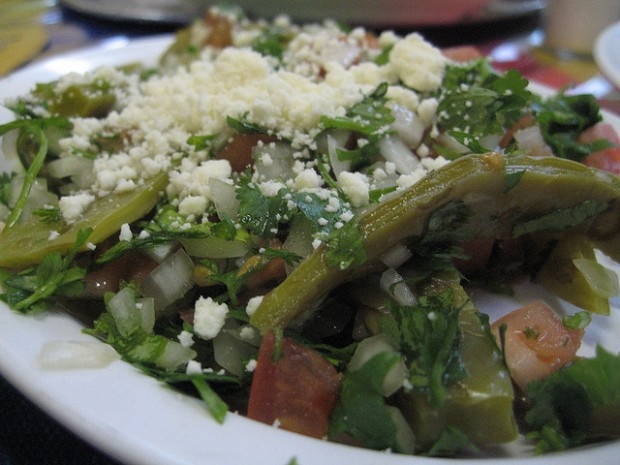
A dish made with nopales (cactus pads).
U-pick organic strawberry season opens on coast
The U-pick strawberry fields at Swanton Berry Farm near Davenport on the coast are formally opening on May 28, but if you drive out there now, you’ll get a chance to pick without a crowd. Talking to Barrett Boaen, the U-pick manager, I got to the bottom of just why their berries, also sold at local Whole Foods stores, look and taste so good.
Partly it’s the ‘Chandler’ variety, chosen for its old-fashioned sweetness and flavor although it yields only about two-thirds as well as some varieties. It’s also about not pumping up production with too much nitrogen or irrigation (more details here). Mostly, though, it’s about the picking process. A strawberry grower visiting from the East Coast recently bought two flats from the farmstand, saying he couldn’t help himself, he had never laid eyes on such beautiful organic berries, and he knew who to congratulate—the pickers.
You and I are unlikely to come close to picking as well as Swanton’s unionized employees, some of whom have more than 20 years of experience at the farm. They recognize when a strawberry is as ripe as it can be, when it’s red and sweet all the way through (strawberries don’t continue ripening once they are picked). Although a less ripe berry is firmer, with a longer shelf-life and easier to transport, it has less flavor, so the pickers wait a day or two for any berry with a green tip or white shoulders to ripen perfectly. They discard berries that are soft on one side (from raindrops settling on the fruit) or have a cat-face look, which is lygus bug damage.
Moving along the rows, which are banked up to 18 inches high to reduce back strain, they harvest each perfectly ripe berry, with its green calyx attached, in a “twist and flick” motion: “you put tension on the stem above the calyx, and rotate it, so you can see 360 degrees and whether there’s any damage to the berry; then with just the right tension, the berry will pop off naturally,” explains Boaen.
In the U-pick fields, which have ocean views, visitors pick for pleasure, hopping from row to row, enjoying the fresh air, and the fragrance of the berries and the earth. Compared to the serious work in the other 20 acres of strawberries, “the 3 acres of U-pick are a playground,” says Boaen, “We provide people everything they need to be happy.”
“It can be demoralizing,” Boaen admits. “All that energy put into the fruit after the excellent warm January was wrecked.”
Fortunately, the farm has several other crops, and the strawberry fields are filling with new berries. You can pick them this summer for $2.50 per pound (10 percent discount for bicyclists). Bring your own containers if you remember, a windproof jacket and boots in case of fog or mud, and most of all, Boaen recommends allowing plenty of time to enjoy yourself.
By mid-June, Swanton ollalieberries will be ripe, and by mid- or late July, the blackberries will be ready. Farm tours are available by reservation. Organic strawberry and ollalieberry jams, and five other kinds, are available at the farmstand or online.
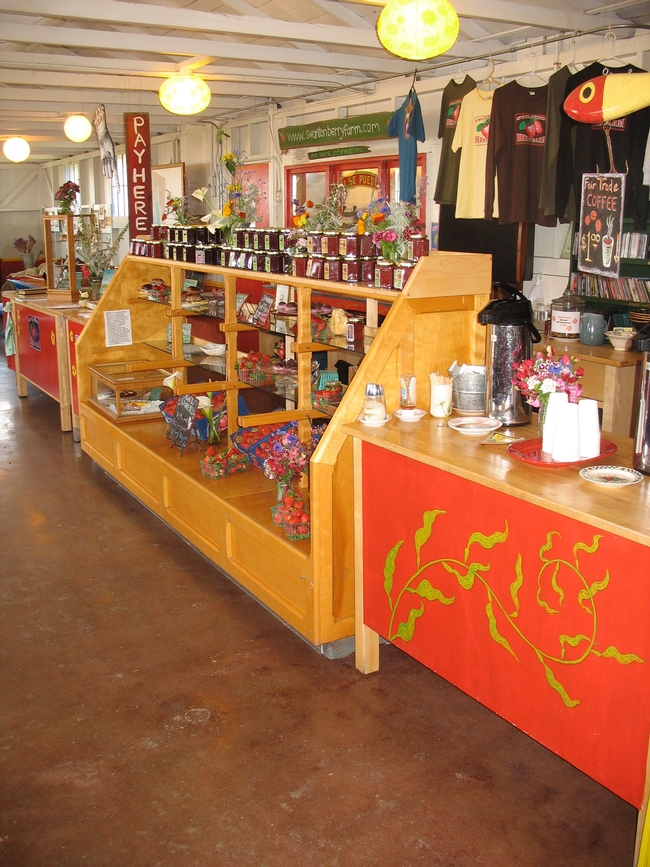
Swanton's farmstand


